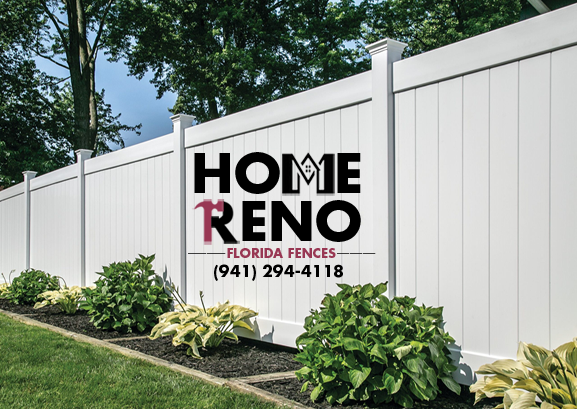Wood vs. Vinyl: Which Spring Hill Privacy Fence is Right for You?
- Privacy Fence Costs Spring Hill, Privacy Fence Installation Spring Hill, Vinyl Privacy Fence Contractor Spring Hill, Wood Privacy Fence Service Spring Hill
Wood vs. Vinyl Privacy Fences: Which Is Right for You?
When deciding between wood and vinyl privacy fences in Spring Hill, it’s essential to weigh factors like cost, durability, maintenance, and aesthetics. Here’s a detailed comparison to help you choose:
1. Cost
- Wood:
- Initial Cost: $11–$45 per linear foot for professional installation, making it more affordable upfront than vinyl.
- Long-Term Cost: Requires ongoing maintenance (staining, sealing, repairs), which can add $1,200 or more in the first year alone. Over time, this increases the total expense.
- Vinyl:
- Initial Cost: $15–$40 per linear foot for professional installation.
- Long-Term Cost: Higher upfront investment but minimal maintenance costs make it more cost-effective over time.
Verdict: Wood is cheaper initially, but vinyl offers better long-term value due to lower maintenance costs.
2. Durability and Lifespan
- Wood:
- Lifespan: 10–15 years with proper maintenance; hardwoods like cedar or redwood last longer than softwoods like pine.
- Susceptible to rot, warping, insect damage, and weathering without regular upkeep.
- Vinyl:
- Lifespan: 20–30+ years with minimal maintenance; resistant to rot, pests, and weathering.
- Does not warp or crack under normal conditions and is UV-resistant.
Verdict: Vinyl outlasts wood significantly and requires far less upkeep.
3. Maintenance
- Wood:
- Requires regular staining, sealing, or painting every 2–3 years to prevent rot and maintain appearance.
- Repairs are more frequent due to potential damage from weather or pests.
- Vinyl:
- Virtually maintenance-free; occasional cleaning with soap and water suffices.
- Resistant to fading, warping, and insect damage.
Verdict: Vinyl is the clear winner for homeowners seeking low-maintenance fencing.
4. Aesthetics
- Wood:
- Offers a natural, traditional look that blends well with most landscapes.
- Can be stained or painted in various colors for customization.
- Vinyl:
- Provides a sleek, modern appearance but lacks the natural charm of wood.
- Limited color options compared to wood but maintains its look without fading or repainting.
Verdict: Wood is better for those seeking a classic or rustic aesthetic; vinyl suits modern preferences.
5. Environmental Impact
- Wood:
- Renewable and biodegradable when sourced responsibly.
- Requires chemical treatments for durability, which may impact sustainability.
- Vinyl:
- Non-biodegradable but recyclable.
- Long lifespan reduces the need for replacements over time.
Verdict: Wood is more eco-friendly upfront but requires ongoing treatments; vinyl’s recyclability makes it a sustainable long-term option.
6. Privacy and Security
- Both materials provide excellent privacy when installed with solid panels.
- Vinyl tends to maintain privacy better over time as it doesn’t warp or create gaps like wood might.
Comparison Summary
| Feature | Wood | Vinyl |
|---|---|---|
| Initial Cost | Lower | Higher |
| Long-Term Cost | Higher (due to maintenance) | Lower |
| Lifespan | 10–15 years | 20–30+ years |
| Maintenance | High (staining/sealing) | Minimal (occasional cleaning) |
| Aesthetics | Natural/traditional look | Sleek/modern look |
| Eco-Friendliness | Renewable/biodegradable | Recyclable |
Conclusion
- Choose a Spring Hill wood privacy fence if you prioritize affordability upfront and prefer a natural aesthetic. Be prepared for regular maintenance.
- Opt for a Spring Hill vinyl privacy fence if you want durability, low maintenance, and long-term cost savings. It’s ideal for modern homes or those looking for minimal upkeep.
Your choice ultimately depends on your budget, style preferences, and willingness to invest in ongoing maintenance.

Spring Hill Privacy Fence Costs: Budgeting for Your Backyard Upgrade
Installing a privacy fence in Spring Hill, Florida, involves balancing upfront costs with long-term durability, especially given the region’s hurricane risks and climate. Here’s a

Wood vs. Vinyl: Which Spring Hill Privacy Fence is Right for You?
Wood vs. Vinyl Privacy Fences: Which Is Right for You? When deciding between wood and vinyl privacy fences in Spring Hill, it’s essential to weigh

How to Install a Vinyl Privacy Fence in Spring Hill
Installing a vinyl privacy fence in Spring Hill can be a rewarding DIY project that enhances your property’s privacy and aesthetics. Here’s a step-by-step guide

Choosing the Right Height for Your Privacy Fence Installation in Spring Hill
Choosing the Right Height for Your Privacy Fence Installation in Spring Hill When selecting the height for your privacy fence, several factors come into play.

Top Questions to Ask a Spring Hill Privacy Fence Contractor Before Hiring
When considering hiring a privacy fence contractor in Spring Hill, it’s crucial to ask the right questions to ensure you’re making an informed decision. Here

How to Choose the Best Privacy Fence Contractor in Spring Hill
Choosing the best privacy fence contractor in Spring Hill requires careful consideration and research. Here are key steps to help you make an informed decision:

How Much Does a Wood Privacy Fence Cost in Spring Hill
The cost of a Spring Hill wood privacy fence can vary significantly based on several factors, including the type of wood, fence height, and installation


